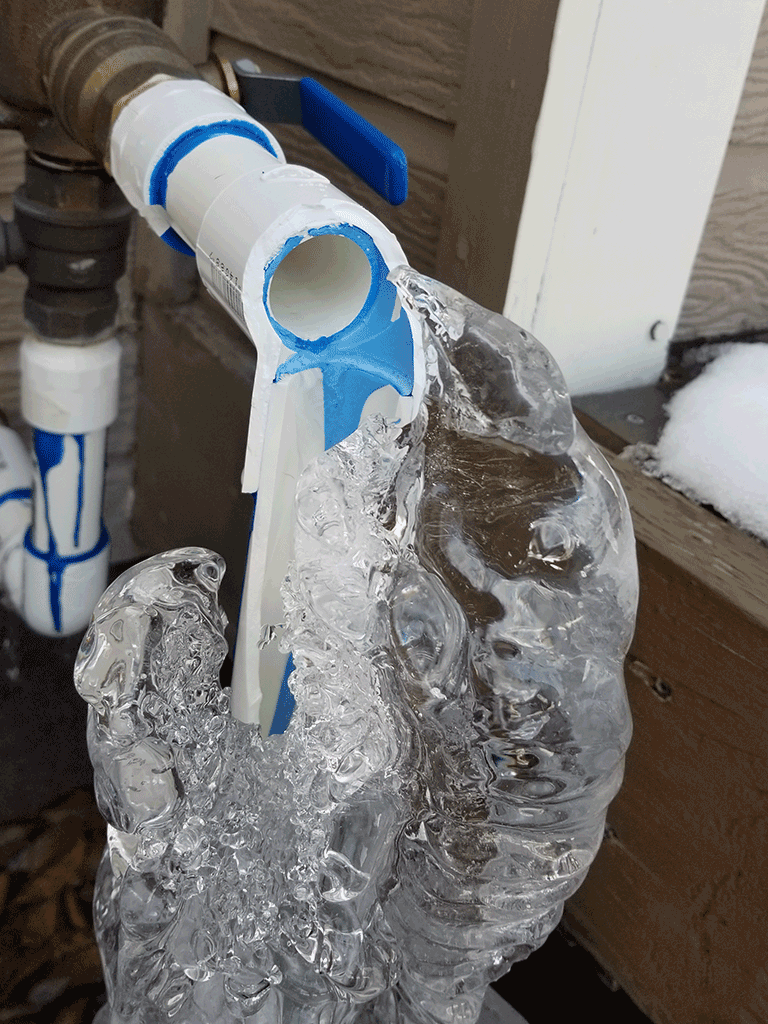Important Advice to Avoid Frozen Pipes in Cold Weather: Professional Insights
Important Advice to Avoid Frozen Pipes in Cold Weather: Professional Insights
Blog Article
Each person will have their unique opinion involving Winter Plumbing Precautions: Preventing Frozen Pipes.

Cold weather can wreak havoc on your plumbing, specifically by freezing pipes. Below's how to stop it from occurring and what to do if it does.
Intro
As temperatures decrease, the risk of frozen pipelines increases, potentially bring about costly repair services and water damages. Understanding exactly how to stop icy pipes is important for home owners in cold climates.
Prevention Tips
Protecting prone pipelines
Cover pipelines in insulation sleeves or make use of heat tape to protect them from freezing temperatures. Focus on pipes in unheated or external areas of the home.
Home heating methods
Keep interior rooms adequately heated up, specifically locations with pipes. Open up cabinet doors to enable cozy air to distribute around pipes under sinks.
Just how to identify icy pipes
Look for decreased water circulation from faucets, uncommon smells or sounds from pipelines, and noticeable frost on revealed pipes.
Long-Term Solutions
Architectural modifications
Think about rerouting pipes far from exterior walls or unheated areas. Add additional insulation to attic rooms, cellars, and crawl spaces.
Updating insulation
Buy high-quality insulation for pipes, attics, and wall surfaces. Correct insulation aids keep regular temperature levels and lowers the danger of frozen pipes.
Protecting Exterior Pipes
Yard tubes and exterior taps
Separate and drain yard pipes prior to winter months. Mount frost-proof faucets or cover outside faucets with shielded caps.
Recognizing Icy Pipelines
What causes pipelines to ice up?
Pipes ice up when revealed to temperatures below 32 ° F (0 ° C) for expanded durations. As water inside the pipelines freezes, it increases, putting pressure on the pipeline walls and potentially triggering them to burst.
Threats and problems
Icy pipes can result in supply of water disruptions, residential or commercial property damages, and expensive repair work. Burst pipes can flooding homes and create considerable architectural damage.
Indications of Frozen Water Lines
Determining frozen pipes early can stop them from rupturing.
What to Do If Your Pipes Freeze
Immediate activities to take
If you presume frozen pipelines, keep faucets open up to eliminate pressure as the ice thaws. Make use of a hairdryer or towels taken in hot water to thaw pipelines slowly.
Conclusion
Stopping frozen pipes calls for positive actions and quick feedbacks. By understanding the reasons, signs, and preventive measures, home owners can safeguard their pipes throughout winter.
5 Ways to Prevent Frozen Pipes
Drain Outdoor Faucets and Disconnect Hoses
First, close the shut-off valve that controls the flow of water in the pipe to your outdoor faucet. Then, head outside to disconnect and drain your hose and open the outdoor faucet to allow the water to completely drain out of the line. Turn off the faucet when done. Finally, head back to the shut-off valve and drain the remaining water inside the pipe into a bucket or container. Additionally, if you have a home irrigation system, you should consider hiring an expert to clear the system of water each year.
Insulate Pipes
One of the best and most cost-effective methods for preventing frozen water pipes is to wrap your pipes with insulation. This is especially important for areas in your home that aren’t exposed to heat, such as an attic. We suggest using foam sleeves, which can typically be found at your local hardware store.
Keep Heat Running at 65
Your pipes are located inside your walls, and the temperature there is much colder than the rest of the house. To prevent your pipes from freezing, The Insurance Information Institute suggests that you keep your home heated to at least 65 degrees, even when traveling. You may want to invest in smart devices that can keep an eye on the temperature in your home while you’re away.
Leave Water Dripping
Moving water — even a small trickle — can prevent ice from forming inside your pipes. When freezing temps are imminent, start a drip of water from all faucets that serve exposed pipes. Leaving a few faucets running will also help relieve pressure inside the pipes and help prevent a rupture if the water inside freezes.
Open Cupboard Doors
Warm your kitchen and bathroom pipes by opening cupboards and vanities. You should also leave your interior doors ajar to help warm air circulate evenly throughout your home.

As an avid reader about How To Avoid Freezing Pipes, I assumed sharing that chunk was beneficial. If you liked our post if you please make sure you remember to pass it around. Bless you for being here. Please stop by our blog back soon.
Contact Us Today Report this page